| |||
|---|---|---|---|
| +... |
| 1672 in science |
|---|
| Fields |
| Technology |
| Social sciences |
| Paleontology |
| Extraterrestrial environment |
| Terrestrial environment |
| Other/related |

The year 1672 in science and technology involved some significant events.
| |||
|---|---|---|---|
| +... |
| 1672 in science |
|---|
| Fields |
| Technology |
| Social sciences |
| Paleontology |
| Extraterrestrial environment |
| Terrestrial environment |
| Other/related |

The year 1672 in science and technology involved some significant events.

Sir Isaac Newton was an English polymath active as a mathematician, physicist, astronomer, alchemist, theologian, and author who was described in his time as a natural philosopher. He was a key figure in the Scientific Revolution and the Enlightenment that followed. His pioneering book Philosophiæ Naturalis Principia Mathematica, first published in 1687, consolidated many previous results and established classical mechanics. Newton also made seminal contributions to optics, and shares credit with German mathematician Gottfried Wilhelm Leibniz for developing infinitesimal calculus, though he developed calculus years before Leibniz.

The Scientific Revolution was a series of events that marked the emergence of modern science during the early modern period, when developments in mathematics, physics, astronomy, biology and chemistry transformed the views of society about nature. The Scientific Revolution took place in Europe in the second half of the Renaissance period, with the 1543 Nicolaus Copernicus publication De revolutionibus orbium coelestium often cited as its beginning.
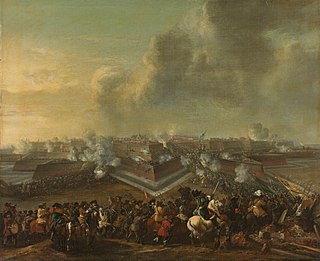
1672 (MDCLXXII) was a leap year starting on Friday of the Gregorian calendar and a leap year starting on Monday of the Julian calendar, the 1672nd year of the Common Era (CE) and Anno Domini (AD) designations, the 672nd year of the 2nd millennium, the 72nd year of the 17th century, and the 3rd year of the 1670s decade. As of the start of 1672, the Gregorian calendar was 10 days ahead of the Julian calendar, which remained in localized use until 1923.

Robert Hooke was an English polymath who was active as a physicist, astronomer, geologist, meteorologist and architect. He is credited as one of the first scientists to investigate living things at microscopic scale in 1665, using a compound microscope that he designed. Hooke was an impoverished scientific inquirer in young adulthood who went on to became one of the most important scientists of his time. After the Great Fire of London in 1666, Hooke attained wealth and esteem by performing more than half of the property line surveys and assisting with the city's rapid reconstruction. Often vilified by writers in the centuries after his death, his reputation was restored at the end of the twentieth century and he has been called "England's Leonardo [da Vinci]".

Thomas Young FRS was a British polymath who made notable contributions to the fields of vision, light, solid mechanics, energy, physiology, language, musical harmony, and Egyptology. He was instrumental in the decipherment of Egyptian hieroglyphs, specifically the Rosetta Stone.
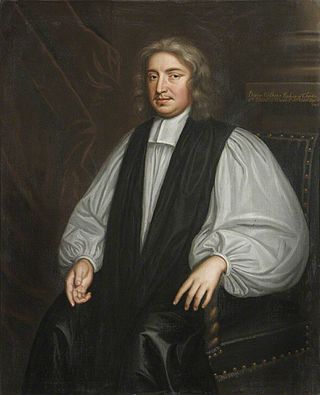
John Wilkins was an Anglican clergyman, natural philosopher, and author, and was one of the founders of the Royal Society. He was Bishop of Chester from 1668 until his death.
This article contains information about the literary events and publications of 1607.
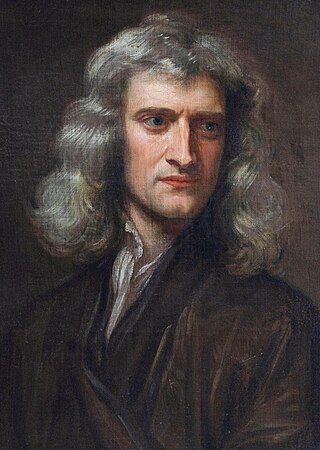
The following article is part of a biography of Sir Isaac Newton, the English mathematician and scientist, author of the Principia. It portrays the years after Newton's birth in 1642, his education, as well as his early scientific contributions, before the writing of his main work, the Principia Mathematica, in 1685.

Jan Baptist van Helmont was a chemist, physiologist, and physician from Brussels. He worked during the years just after Paracelsus and the rise of iatrochemistry, and is sometimes considered to be "the founder of pneumatic chemistry". Van Helmont is remembered today largely for his 5-year willow tree experiment, his introduction of the word "gas" into the vocabulary of science, and his ideas on spontaneous generation.
The year 1697 in science and technology involved some significant events.
The year 1669 in science and technology involved some significant events.
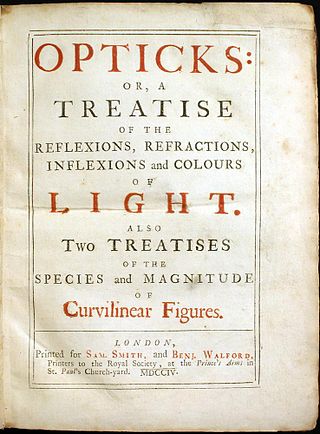
Opticks: or, A Treatise of the Reflexions, Refractions, Inflexions and Colours of Light is a book by Isaac Newton that was published in English in 1704. The book analyzes the fundamental nature of light by means of the refraction of light with prisms and lenses, the diffraction of light by closely spaced sheets of glass, and the behaviour of color mixtures with spectral lights or pigment powders. Opticks was Newton's second major book on physical science and it is considered one of the three major works on optics during the Scientific Revolution. Newton's name did not appear on the title page of the first edition of Opticks.
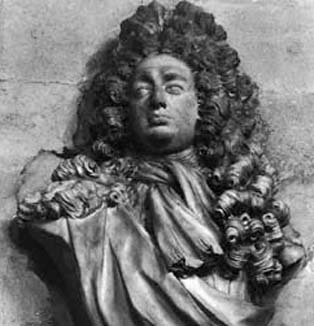
David Gregory FRS was a Scottish mathematician and astronomer. He was professor of mathematics at the University of Edinburgh, and later Savilian Professor of Astronomy at the University of Oxford, and a proponent of Isaac Newton's Principia.

Nicolas Fatio de Duillier was a mathematician, natural philosopher, astronomer, inventor, and religious campaigner. Born in Basel, Switzerland, Fatio mostly grew up in the then-independent Republic of Geneva, of which he was a citizen, before spending much of his adult life in England and Holland. Fatio is known for his collaboration with Giovanni Domenico Cassini on the correct explanation of the astronomical phenomenon of zodiacal light, for inventing the "push" or "shadow" theory of gravitation, for his close association with both Christiaan Huygens and Isaac Newton, and for his role in the Leibniz–Newton calculus controversy. He also invented and developed the first method for fabricating jewel bearings for mechanical watches and clocks.

Anne Conway was an English philosopher of the Enlightenment, whose work was in the tradition of the Cambridge Platonists. Conway's thought is a deeply original form of rationalist philosophy, with hallmarks of gynocentric concerns and patterns that lead some to think of it as unique among seventeenth-century systems.Conways work was an influence on Gottfried Leibniz, and Hugh Trevor-Roper called her "England's greatest female philosopher."

The Newton disc, also known as the disappearing colour disc, is a well-known physics experiment with a rotating disc with segments in different colours appearing as white when it's spun rapidly about its axis.
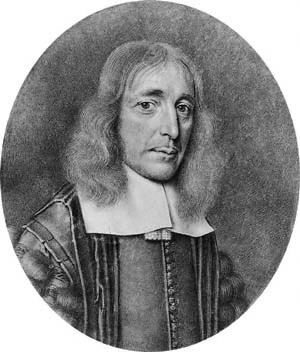
Thomas Willis FRS was an English physician who played an important part in the history of anatomy, neurology and psychiatry, and was a founding member of the Royal Society.
Events from the year 1672 in England.
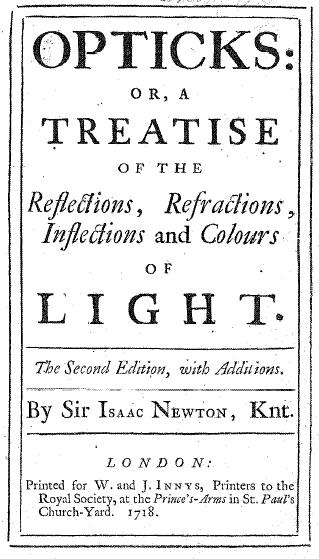
Newtonianism is a philosophical and scientific doctrine inspired by the beliefs and methods of natural philosopher Isaac Newton. While Newton's influential contributions were primarily in physics and mathematics, his broad conception of the universe as being governed by rational and understandable laws laid the foundation for many strands of Enlightenment thought. Newtonianism became an influential intellectual program that applied Newton's principles in many avenues of inquiry, laying the groundwork for modern science, in addition to influencing philosophy, political thought and theology.

Newton is a monotype by the English poet, painter and printmaker William Blake first completed in 1795, but reworked and reprinted in 1805. It is one of the 12 "Large Colour Prints" or "Large Colour Printed Drawings" created between 1795 and 1805, which also include his series of images on the biblical ruler Nebuchadnezzar.
The Original or primary colours are, Red, Yellow, Green, Blew, and a Violet-purple, together with Orange, Indico, and an indefinite variety of Intermediate gradations.